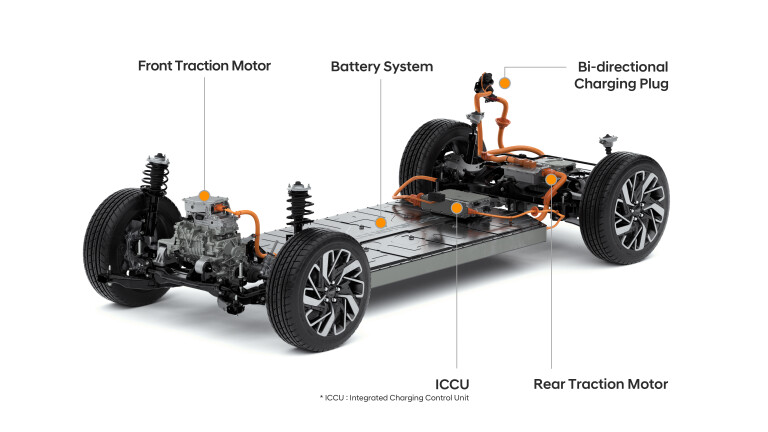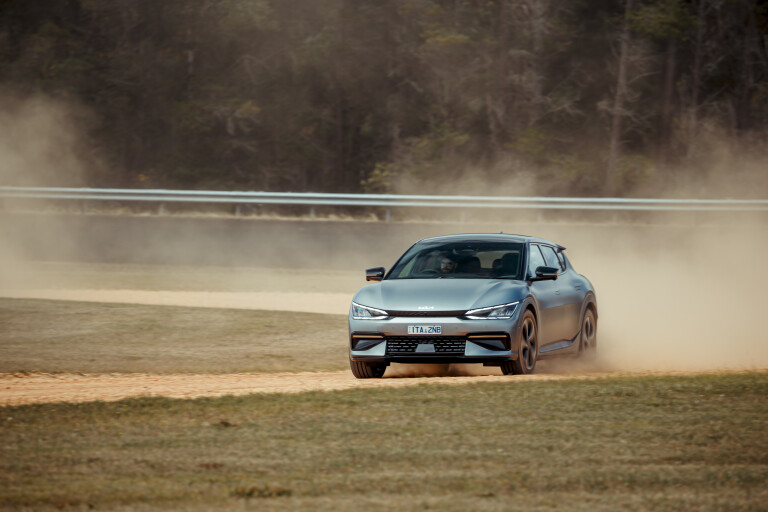
In the history of the Wheels’ Car of the Year award, you’ll look long and hard to find a brand that’s done what Kia has managed: made such a short and steep ascension from outlier, to midfielder, to victor.
Keep in mind that even in Wheels’ comparison tests, Kia’s first victory didn’t come until the launch of the third-generation Sorento in 2015. As for COTY, it took until 2018 for a Kia to make it to the second round of the testing process, when the seductive but slightly flawed Stinger advanced beyond the proving ground.
But given the Hyundai Ioniq 5’s second-placed finish at COTY 2022, it’s impossible to ignore to joint impact these two cars, and their shared E-GMP platform, have had not only on the Wheels award, but on the EV segment more broadly.

Consider that Toyota’s first model on a dedicated EV architecture - the bZ4X - is still months away from global launch. Only a few years ago it would have seemed inconceivable that Kia would have managed such a crucial jump on its leviathan competitors.
There’s no question that past years of heavyweight recruiting by the Hyundai Motor Group (HMG) has paid big dividends, and had a major impact on Kia. In fact it seems this is a key point that goes some way to explaining the rise and rise of the Korean giant. Sometime ago, veteran auto executive heavyweight Bob Lutz was asked to explain the success of Kia and Hyundai, and how the Korean automotive management culture differed from that of the Japanese.
“Japanese executives, in my experience, often get tangled up in history, tradition, and the supposed superiority of their culture,” said Lutz, “but I’ve found Korean leaders to be bold, tough, gregarious, and open to new ideas. The Koreans are not hung up on their culture: They hire the best, Korean or not. It’s their strength. They accept risk.”

Hiring the best has been a visible key component of Hyundai and Kia’s success, a move championed by former Chairman Mong-Koo Chung, whose father Chung Ju-Yung founded Hyundai group as an engineering and construction company in 1947. Mong-Koo joined the company in 1970, three years after Hyundai Motor Co was established, was chairman of Hyundai from 1996, and then added Kia to his portfolio, too, after Hyundai bought a 51-percent chunk of it in 1998 to form today’s parent company, Hyundai Motor Group (HMG).
It was Mong-Koo who demanded a focus on quality assurance and oversaw the introduction of industry-leading new-car warranties, a strategy that no doubt helped propel HMG to where it is now: the fourth-largest car maker (by volume) on the planet.
Chung Ju-Yung’s establishment of the company in the aftermath of World War II is perhaps where the willingness to take calculated risks that Lutz was talking about came from: it seems he handed this character trait down through generations.

It was Kia co-CEO Eosin Chung (grandson of Ju-Yung and son of Mong-Koo), who, in 2006, made the bold move of poaching German designer Peter Schreyer from the VW Group. Schreyer penned the Mark 4 VW Golf and the design-zenith Audi TT, yet it wasn’t entirely clear at the time why the company selling cheap runabouts like the original Rio needed a rock-star designer.
It was this sort of move that helped turn Kia (and Hyundai) from makers of price-led transport into manufacturers of cars people really want. Schreyer gave Kia a visual identity, with the ‘tiger nose’ now seen as a pivotal transition point.
Current head of design is 52-year-old Karim Habib, who oversaw the exterior of the EV6 in collaboration with HMG chief creative officer Luc Donckerwolke. Habib previously worked by BMW, where he penned the stunning CS concept of 2007 and the fifth-generation BMW 7 Series. He’s also done stints at Mercedes-Benz and Infiniti before joining Kia in late 2019.

When asked about inspiration for the EV6’s striking exterior design, says Habib answered, “We wanted to strike a balance between contrasting elements – the sportiness of a fastback, the compact stance of a hatch and maybe even the raw strength of a rally car.”
Sometimes this sort of stuff from designers can come off as little more than lines fed to them by the marketing department, but in this instance we agree.
Then there’s the superbly honed open-road dynamics of the EV6.
One key part of the Kia’s COTY win over the related Ioniq 5 was its Australia-specific chassis tune and the use of a new suspension technology from ZF Sachs called Sensitivity Damping Control (SDC).
According to Kia Australia’s ride and handling engineer, Graeme Gambold, the finished tune of the Kia EV6 represents a “step-change” for electric vehicles.
“Sensitivity Damping Control is basically a frequency-dependent rebound valve – so it doesn’t deal with piston speed, it deals with piston frequency,” Gambold told Wheels.

“It holds energy in a little energy bypass orifice, so when the car’s bouncing over a bumpy road, which we get in Australia a lot, it can control those large-amplitude body motions. In a two-tonne electric vehicle, that’s a lot of energy to control.
“It controls the energy by catching it. It’s a little bit like a Skyhook effect – you can have a lot of damping over a very big vertical rise, which an EV gets a lot of.
“Typically if you dampen for that, you lose your urban ride, but this shock absorber separates the two a fair bit so that we can recover some of that urban ride.
“As an engineer I know the challenges of controlling two tonnes worth of kinetic stored energy at the bottom of a big impact, and keeping the car’s dynamics in check and in control over country roads,” Gambold says.
Our back-to-back testing between Ioniq 5 and the COTY-winning EV6 saw this clearly demonstrated.

Of course, the current three-strong EV6 line-up doesn’t fully realise the performance potential that this EV will ultimately deliver. At a date still to be confirmed (but likely well into 2023) Kia will launch its electric flagship in the form of the EV6 GT, which pairsthe long-range 77kWh battery with more powerful electric motors making 430kW/740Nm combined.
Those outputs are sufficient to thrust the SUV from 0 to 100km/h in just 3.5 seconds and on to a top speed of 260km/h.
So, a Kia with comparable acceleration to a Porsche 911 Carrera S. It really is a brave new world. And one where Kia’s incredible transformation still has some scope to play out.
But for now read on to learn exactly why the remarkable EV6 is Wheels’ 2022 Car of the Year.



COMMENTS